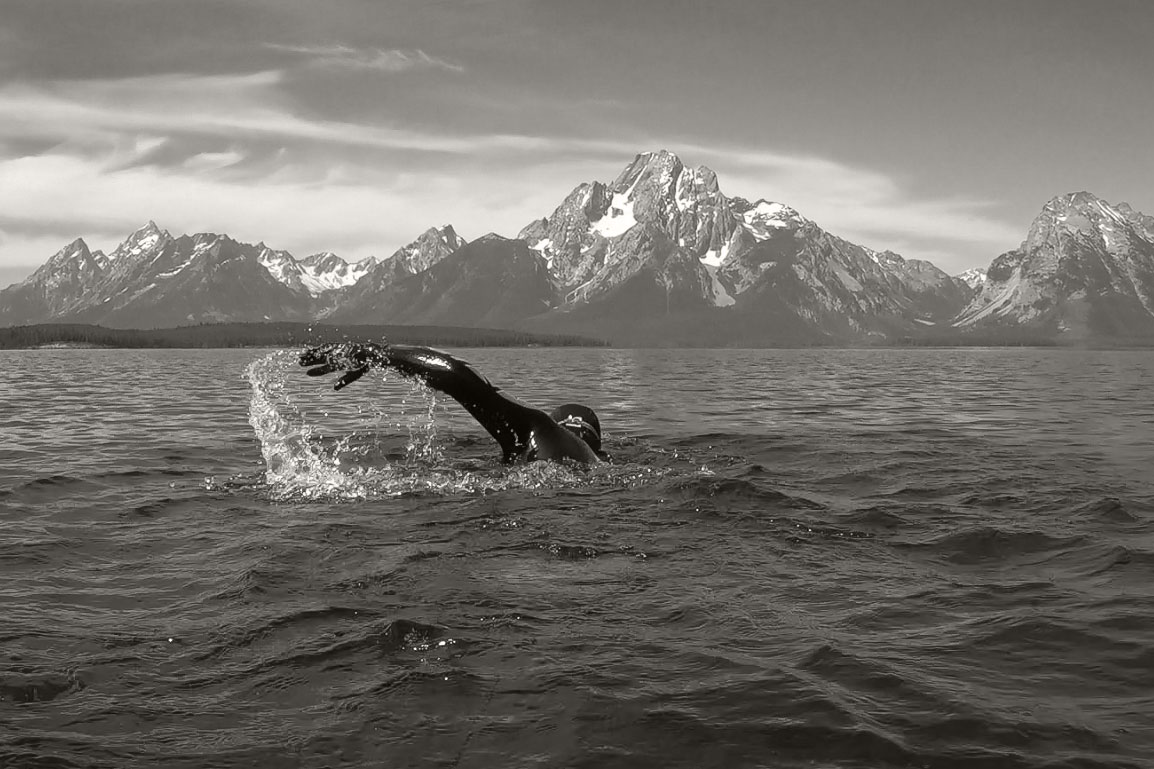The picnic is your own challenge, the experience is yours, you can do it however you want. But here are a few tips and tricks that have been valuable to me, in the style I most enjoy, which is to do it totally unsupported, without using caches.
This is most satisfying because after you’ve done it, you know you haven’t cut any corners, and doing it this way doesn’t make it any harder. In my mind, it makes it easier, because then you don’t have to stage gear beforehand, or go back and get it afterwards, both of which consume energy when you least have it to spare.
To carry stuff on my bike, I use a seatpost rack and wear a small daypack. On the rack I lash a drybag containing my wetsuit, approach shoes, and climbing gear; in my pack on my back is very little, just layers and snacks I might need on the ride.

For the swim, I put my food, shoes, water I’ll need for the first part of the hike, my hiking clothes, climbing gear and daypack in the drybag, roll it up and seal it as well as possible, makes sure it floats in the water without any of the roll-top dragging in the water, attach 10 feet of cord to the drybag, and the other end to a belt around my waist, the belt buckled with a fastex or similar quick-release buckle so I could take it off at a moment’s notice if necessary (though this has never been necessary). You don’t need a boogie board or anything else for thy drybag to float on, it just bobs along behind you and you’ll hardly notice it. You can literally cram it as full of stuff as you want and it still floats just fine.
Of course, you leave your bike at the near end of the lake before you swim (I use a light lock and lock it to a tree in the woods just north of the Jenny Lake overlook) and after you swim, leave your wetsuit hanging in a tree near the shore, inside out so it dries while you’re on the GT.

While climbing the Grand, I carry almost no water, because you can get good spring water (that I and most of my friends never treat) at ‘Horse Piss Spring,’ (the little spring that crosses the long, southerly switchback just after the turn-off for the Amphitheater Lake trail), Spaulding Falls, the Lower Saddle, and the seep just before you reach the Eye of the Needle on the way up to the upper saddle. I’ll bring a liter, maybe 1.5 liters, above the lower saddle on the way up the GT. Not carrying an excess of water uphill can save a great deal of energy. Just drink a metric buttload while you’re resting at every water stop. Drinking often and copiously is the single most important strategy to keep one’s picnic enjoyable. Those springs up and down the GT are magic; make full use of them!

If you’re going to solo the Grand, then of course your pack will be very light. If you’re going to use gear and a rope, go as light as you can. Every gram counts. Pack a superlight harness, a few light cams and/or nuts, and the lightest, shortest rope you feel o.k. with. When I go with a friend, we each bring a 30-meter 8-mm half-rope. You can lead with it doubled, and you can rap from the main rappel anchor with a 60-meter rope if you stay as far right (climber’s right) as possible while you’re doing it. Please don’t solo the GT during a picnic unless you’ve done it before and feel very confident about it.
Last, don’t be afraid to call it if you don’t feel right, or if the weather sucks. It took me a few tries before I did the first GT Picnic, and I was glad to have every experience that I did. By the time I actually finished it, I was plenty comfortable with swimming across the middle of Jenny Lake, which meant a significant savings in mental and physical energy on subsequent crossings. Better safe than sorry … the Grand isn’t going anywhere!
Featured image of Adam Wirth crossing Jenny Lake at sunrise by Todd Meier.

